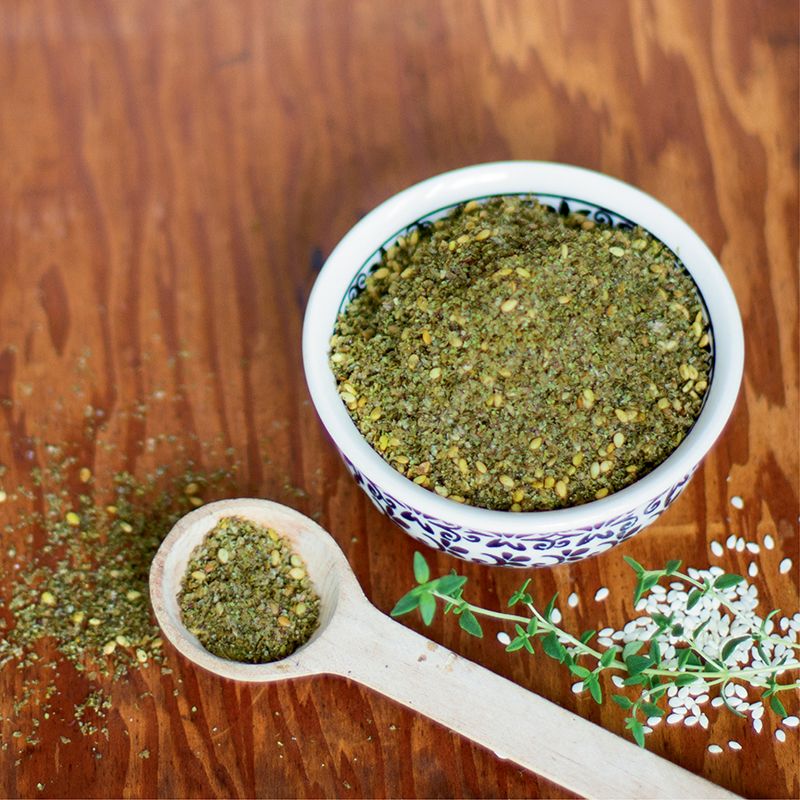Charleston dishes are getting a savory spin with za’atar, a Middle Eastern spice blend

WHAT IT IS:
A popular ingredient in Middle Eastern and North African cuisine, za’atar (pronounced zah-tar) is an ancient, earthy spice blend often comprised of dried hyssup leaves, sesame seeds, oregano, thyme, marjoram, and sumac. Traditionally, the seasoning is served in a small bowl alongside a ramekin of olive oil, with diners dipping fresh pita bread first into the oil and then za’atar for a savory breakfast. But lately, Lowcountry kitchens have added the blend to a variety of dishes—using it in rubs for pork and fish, as a topping for avocado toast, and as a seasoning for vegetables. “It brings the perfect Middle Eastern taste to any food,” says Pat Gotschall, executive chef at Park Café.
WHERE TO GET IT:
The Daily (652 King St. & 135 Meeting St., shopthedaily.com)
For his Middle Eastern-focused items at The Daily and Butcher & Bee, chef Michael Zenter likes the complex, aromatic flavor of za’atar. “I love using the spice blend, because it adds a bold flavor profile to lighter dishes focused on seafood and vegetables,” he says. Currently, The Daily offers a brunch dish of avocado toast drizzled with olive oil and sprinkled with sea salt and za’atar, but more dinner items are in the works at Butcher & Bee, including a grilled fish entrée and a roasted zucchini side dish.
Felix Cocktails et Cuisine (550 King St., felixchs.com)
To curate the menus at his trendy cocktail bar and small-plate café on King, chef-owner Felix Landrum stays up-to-date on the culinary happenings in France. “Cuisines from Northern African countries like Morocco are extremely popular in Paris right now,” says Landrum, who is experimenting with a Moroccan-inspired chicken dish seasoned with za’atar. “French markets are exploding with spices like za’atar.” Currently at Felix, the blend gets added to an entrée of grilled white fish, savory saffron broth, yogurt, zucchini, and smoked olive oil.
Park Café (730 Rutledge Ave., theparkcafechs.com)
At the quaint and airy restaurant near Hampton Park, Gotschall praises the unique taste of za’atar. “I think its popularity in Western cultures stems from us wanting to expand our culinary boundaries,” he says. “Using za’atar is an easy way to bring Middle Eastern flavors to the table.” Gotschall uses it to season pork loin that’s featured in a savory sandwich—the meat combines with tomato, cucumber, red onion, and a creamy mint-dill spread, all wrapped in warm pita bread—and in a Mediterranean-inspired salad. The chef notes, “In the future, I’d like to explore adding it to beets and cauliflower for a vegetarian sandwich.”